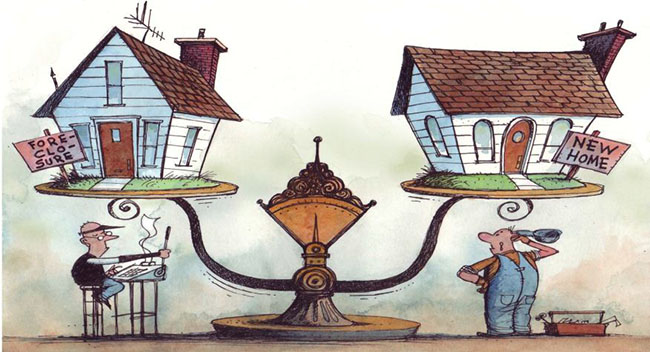Home Building Articles
New Homes vs Foreclosures
August 27, 2009
Apples vs. Oranges
Appraisers need regulatory guidelines that acknowledge today's realities.
Related Articles
Save/Share

Picture this: For the first time in months a small builder sells a new home. The
sales price cuts the builder's profit to the bone, but it's a reasonable price given
today's housing market. The buyers are well qualified, and everything is going along
smoothly until the appraisal comes in at tens of thousands of dollars less than
the sales price. Why? The local market has been hit hard by the recession and the
comparables include foreclosures and other distressed sales.
Now the builder faces a wrenching dilemma. Does he cut the home's price to be consistent
with the appraisal value and take a loss, or does he cancel the sale even though
it could take a long time to find another buyer and the next appraisal could come
in equally low?
Scenarios like this are playing out daily in markets across the country as the use
of foreclosed and distressed sales as comparables for appraisals on single-family
homes needlessly drives down home values, slows new-home sales, and puts a drag
on the housing recovery.
Equally important, using foreclosed and distressed properties as comparables is
affecting the availability of AD&C credit. Falling appraised values for land and
subdivisions under development have led some financial institutions to stop lending
to developers/builders, to demand additional equity, and even to call performing
loans.
This is a complex situation with many interconnected parts. In the wake of criticism
that lax appraisal standards contributed to the economic and housing crisis, appraisal
standards and procedures were tightened earlier this year. But now the pendulum
has swung too far, and reports of homes failing to appraise at the sales price,
or even construction cost, have become more prevalent.
There's no question that the conditions in today's housing market are unprecedented.
The practices that may have been effective in the past are no longer responsive
to the realities of today's housing market.
For example, appraisers generally are only required to inspect the Exterior of a
property that is being used as a comparable. But, too often, properties that have
been subject to foreclosure or distress sales have issues related to deferred maintenance
or internal damage that an external inspection cannot detect.
The NAHB believes that it's time for appraisers to have regulatory guidelines that
acknowledge such realities. In neighborhoods where the comps include a large number
of short sales or foreclosures, appraisers should have the option of expanding the
geographic area or extending the time frame for eligible sales to get a more representative
picture of the value of homes sold in the area.
The NAHB has been working on this issue for some time, and we have reached out to
the Appraisal Institute, which held an informational session at the fall board of
directors meeting last year to help builders better understand the appraisal process.
We continue to work with the Institute and other housing industry groups to address
this important issue. We have also made our position clear to the regulators who
set the standards for home sales.
What the market needs most is clear, concise regulatory guidance from Fannie and
Freddie and the housing and financial regulators that will allow appraisers to develop
realistic valuations based on sales that are truly comparable.
The bottom line is that you just cannot compare a well-constructed new home with
a foreclosed home that has been vacant for months. They simply are not "comparable,"
and the standards need to be adjusted to reflect that reality.